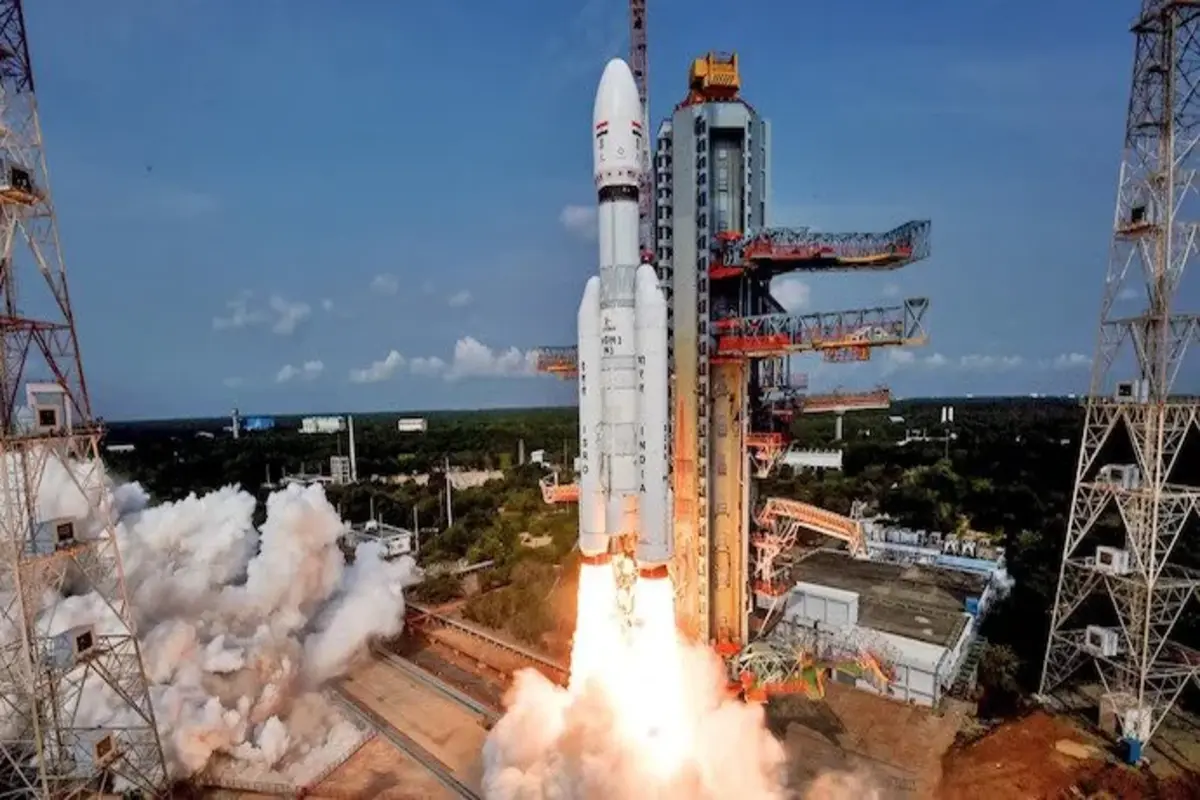
Chandrayaan-3 mission
The Chandrayaan-3 mission, launched from the Satish Dhawan Space Centre in Sriharikota at 2:35 pm on July 14, 2023, is India’s third lunar mission and second attempt to accomplish a soft landing on the Moon.
The mission is expected to reach the lunar orbit a month after launch, with its lander and rover landing on the moon’s surface on August 23.
The launch of Chandrayaan-3 comes nearly four years after the partial failure of the Chandrayaan-2, which was sent into space on July 22, 2019, and whose lander, Vikram, and rover, Pragyaan, crashed on the Moon’s surface in the early hours of September 7, 2019.
The Indian Space Research Organisation (ISRO) lost touch with Vikram on the day of landing when it was only 335 metres (0.335 km) from the Moon’s surface.
The malfunction occurred during the fine braking phase in the final stage of Vikram’s voyage (an altitude of 5 km to 400 m), which kicked in when the lander was 5 km from the lunar surface.
The green line, which represented the lander, began diverging when its altitude was just above 2 km and continued to diverge until it came to a halt at a location definitely below 1 km altitude, and somewhere around or below 500m.
At that moment, the module was moving at a vertical velocity of 59 metres per second (or 212 km/hr) and a horizontal velocity of 48.1 metres per second (or 173 km/hr). The lander was about 1.09 kilometres from its intended landing site on the Moon at the time.
Vikram was planned to lose most of its velocity by the time it was 400m from the lunar surface, and it was supposed to be hovering above the intended landing spot, ready to begin a gradual vertical fall at a walking pace. However, due to its tremendous velocity, it collided with the Moon’s surface.
ISRO Chairman S Somanath highlighted three errors that led to Vikram’s harsh landing.
Chairman said, “The primary issues were, one, we had five engines which were used to give the reduction of the velocity, which is called the retardation. These engines produced more thrust than what was expected”.
He pointed out that the extra thrust caused an accumulation of errors, which jeopardized the lander’s stability during the camera coasting phase for the soft landing.
This is where the second issue arose. All the errors got accumulated, which was higher than what we had anticipated. The craft had to make very fast turns. When it started to turn very fast, its ability to turn was limited by the software because we never expected such high rates to come”, Somanath remarked.
The third issue arose when the lander, despite being close to the surface, increased its velocity because the landing site was quite far away. Mr Somanath explained that this partly happened because the landing spot was quite a small patch of 500 m x 500 m.
“In a nutshell, the problem with Chandrayaan-2 was that its ability to handle parameter dispersion was very limited”, Chairman S Somanath explained.
Also read: NASA’s Incorrect Command Breaks Contact With 12 Billion Miles Away Voyager 2 Space Probe
To read more such news, download Bharat Express news apps


















